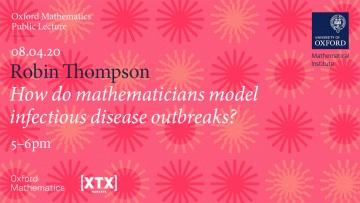Models. They are dominating our Lockdown lives. But what is a mathematical model? We hear a lot about the end result, but how is it put together? What are the assumptions? And how accurate can they be?
In our first online only lecture Robin Thompson, Research Fellow in Mathematical Epidemiology in Oxford, will explain. Robin is working on the ongoing modelling of Covid-19 and has made many and varied media appearances in the past few weeks. We are happy to take questions after the lecture.



